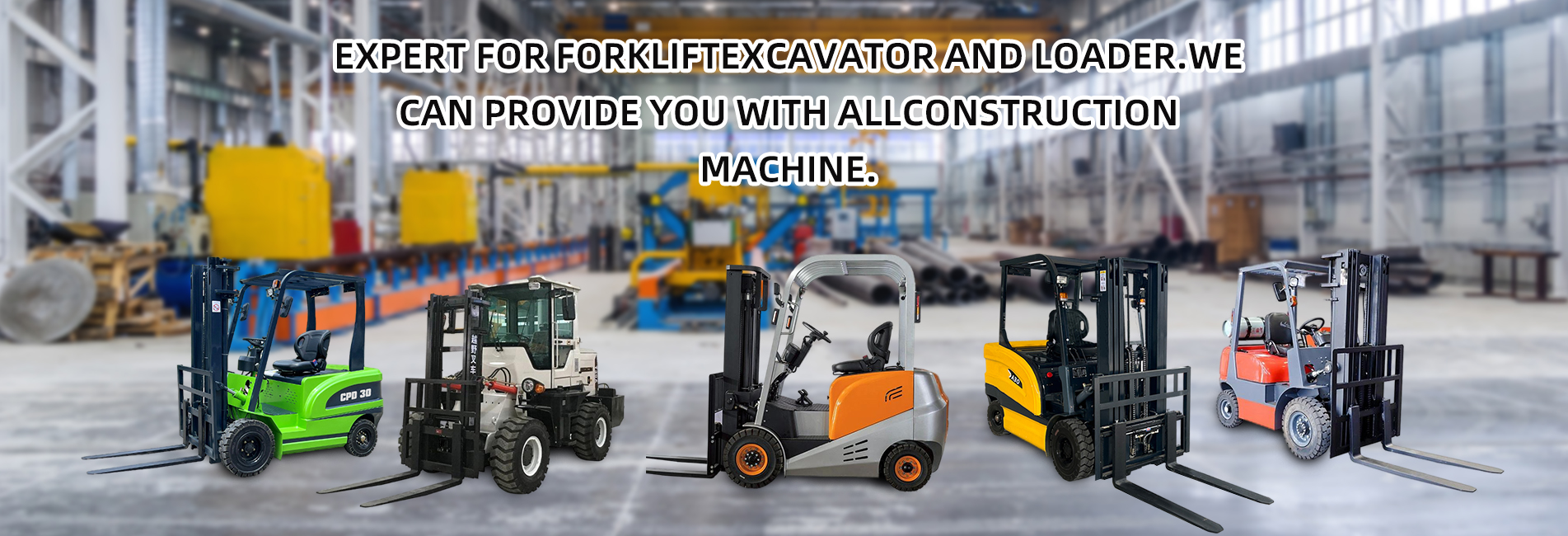5-Ton Electric Forklift: Lithium Battery vs. Lead-Acid Battery - Comprehensive Comparative Analysis
I. Core Performance Differences

1. Charging and Usage Efficiency
Lithium Battery (Lithium Iron Phosphate):
- Charging Speed: Fully charged (0-100%) in 1-2 hours, 50% power recovered in 30 minutes
- Operating Duration: 8-10 hours of continuous operation on a single charge, about 40% higher than lead-acid batteries
- Charging Flexibility: Supports "opportunity charging" (topping up anytime during work breaks) without damaging battery life
- Efficiency Advantage: Energy conversion rate reaches 95%, about 20% higher than lead-acid batteries (70-80%), reducing energy consumption by 20-30% for the same workload
Lead-Acid Battery:
- Charging Time: 6-8 hours for a full charge, plus cooling time totaling about 10 hours
- Operating Duration: Typical usage time is about 6 hours, with deep discharge (≤50% capacity) to be avoided
- Charging Restrictions: Must be fully discharged before recharging; random charging is not supported as it easily causes sulfation
2. Service Life and Cycle Count
Lithium Battery:
- Cycle Life: 3,000-5,000 cycles, 3-5 times that of lead-acid batteries
- Service Life: No replacement needed for 8-10 years, with capacity attenuation <20% within 10 years
- Deep Discharge Tolerance: Can withstand 80% depth of discharge without affecting lifespan, suitable for high-intensity operations
Lead-Acid Battery:
- Cycle Life: Only 300-500 cycles (1,000-1,500 cycles for high-quality products)
- Service Life: Generally 2-3 years, up to 5 years, requiring 3-4 replacements within 10 years
- Discharge Restriction: Recommended depth of discharge ≤50%, otherwise lifespan is significantly shortened
3. Maintenance Convenience
Lithium Battery:
- Almost Maintenance-Free: No need for water refilling or electrolyte replenishment, no acid mist emission
- Automatic Management: Built-in BMS (Battery Management System) to automatically monitor voltage, temperature, and SOC
- Maintenance Cost: Annual maintenance fee is only about 500 yuan, totaling about 4,000 yuan for 8 years
Lead-Acid Battery:
- High-Frequency Maintenance: At least monthly water refilling and quarterly equalization charging (about 200 yuan per time)
- Professional Requirements: Requires dedicated personnel for maintenance; otherwise, plate sulfation and significant lifespan reduction are likely
- Maintenance Cost: High (including labor costs), with regular electrolyte replacement required
II. Key Parameter Comparison Table
| Parameter | Lithium Battery (Lithium Iron Phosphate) | Lead-Acid Battery | Impact of Difference |
|---|---|---|---|
| Initial Cost | High (50-70% more expensive than lead-acid) | Low (100% as benchmark) | Large short-term investment, more economical in the long run |
| Weight | Light (reduces overall vehicle weight by 30-50%) | Heavy (increases energy consumption) | Lithium battery improves energy efficiency and reduces tire wear |
| Energy Density | High (150-200 Wh/kg) | Low (about 50 Wh/kg) | Lithium battery has 3x the capacity at the same volume and longer endurance |
| Low-Temperature Performance | Excellent (maintains 85%+ capacity at -20℃) | Poor (only 70% capacity at the same temperature) | Lithium battery is preferred for cold storage/low-temperature environments |
| Safety | High thermal stability of lithium iron phosphate (750℃); non-flammable electrolyte; low thermal runaway risk | High safety; application scenarios vary | Both have high safety with different suitable scenarios |
| Environmental Friendliness | Zero emissions, no heavy metal pollution | Contains lead and acidic substances, requiring professional recycling | Lithium battery is more environmentally friendly, suitable for food and pharmaceutical industries |
| Self-Discharge Rate | Low (only 3% per month) | High (15% per month) | Lithium battery is more suitable for intermittent use scenarios |
III. Economic Benefit Analysis
1. Total Cost of Ownership (TCO) Comparison
Lithium Battery:
- Initial Cost: High (about 180,000-250,000 yuan per 5-ton forklift)
- Replacement Cost in 10 Years: 0 yuan (one-time investment for lifelong use)
- Maintenance Cost: About 4,000 yuan (for 8 years)
- Energy Saving: 20-30% more energy-efficient than lead-acid, saving about 500kWh per vehicle annually
- TCO Advantage: Under multi-shift high-intensity use (≥8 hours/day), 10-year TCO is 10-20% lower than lead-acid
Lead-Acid Battery:
- Initial Cost: Low (about 100,000-150,000 yuan per 5-ton forklift)
- Replacement Cost in 10 Years: High (3-4 replacements needed, about 300,000-400,000 yuan)
- Maintenance Cost: High (including labor, about 20,000-30,000 yuan for 10 years)
- Higher Energy Consumption: 20-30% more power consumption than lithium battery
2. Economic Analysis of Applicable Scenarios
Optimal Scenarios for Lithium Battery:
- Multi-shift continuous operation (≥8 hours/day)
- Cold storage/low-temperature environments (below -10℃)
- E-commerce/logistics centers (high intensity, high turnover rate)
- Automated warehouses (requiring precise control and low maintenance)
- Regions with high labor costs (saving maintenance manpower)
Optimal Scenarios for Lead-Acid Battery:
- Single-shift light to moderate use (≤4 hours/day)
- Small and medium-sized enterprises with limited budgets
- Traditional factories with fixed maintenance teams
- Short-term rental/temporary use scenarios
IV. Special Considerations for 5-Ton Forklifts
1. Impact on Heavy-Load Performance
- Lithium Battery: More stable output power, maintaining 90%+ rated power even when power drops to 20%
- Lead-Acid Battery: Output power decreases significantly when power is below 50%, weakening heavy-load capacity
2. Charging Facility Requirements
- Lithium Battery: Requires a dedicated fast charger (power ≥30kW) but has short charging time, no backup battery needed
- Lead-Acid Battery: Standard charger is sufficient, but 2-3 sets of backup batteries are required for rotation, occupying large space
V. Summary: How to Choose?
Choose Lithium Battery if you prioritize:✓ Long-term economic benefits (usage >3 years)✓ High efficiency (reducing charging waiting time and increasing daily operation hours)✓ Low maintenance (eliminating maintenance troubles and labor costs)✓ Environmental friendliness/low-temperature adaptability✓ Automated/intelligent operation needs
Choose Lead-Acid Battery if you prioritize:✓ Short-term budget control (investment <2 years)✓ Light to moderate use with a fixed maintenance team✓ No fast charging conditions but sufficient battery storage space✓ Traditional operation mode and low-cost entry
Final Recommendation:As a high-value equipment, 5-ton electric forklifts are recommended to prioritize lithium batteries. Especially under multi-shift, high-intensity or low-temperature environments, their long-term comprehensive benefits far exceed the initial price difference.If budget is limited and only single-shift light use is needed, lead-acid batteries can be considered, but later replacement and maintenance costs should be reserved.


